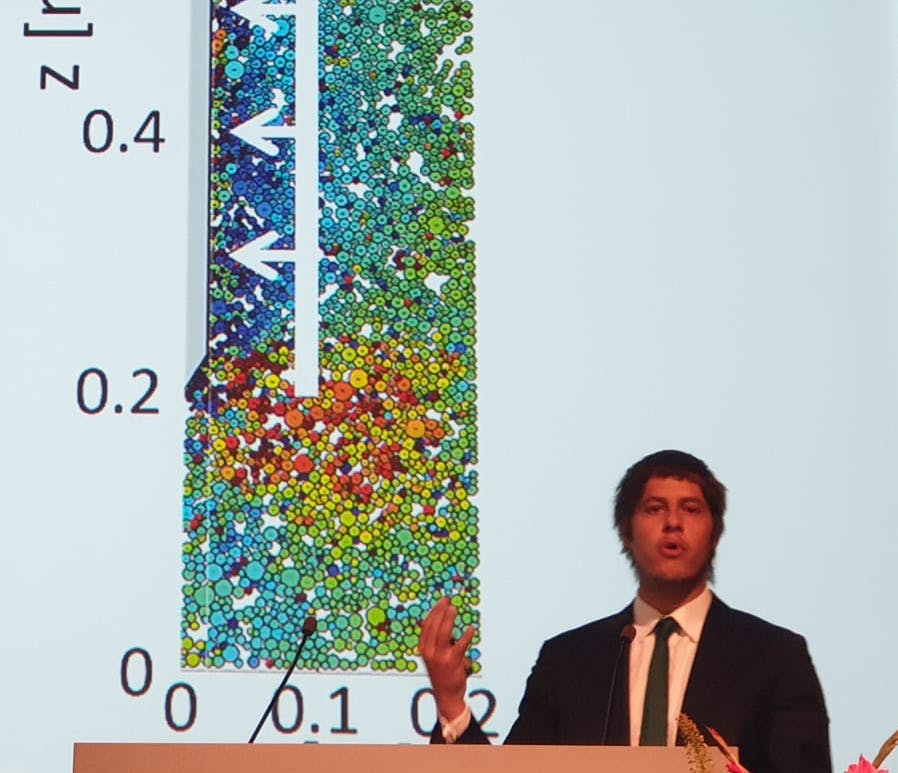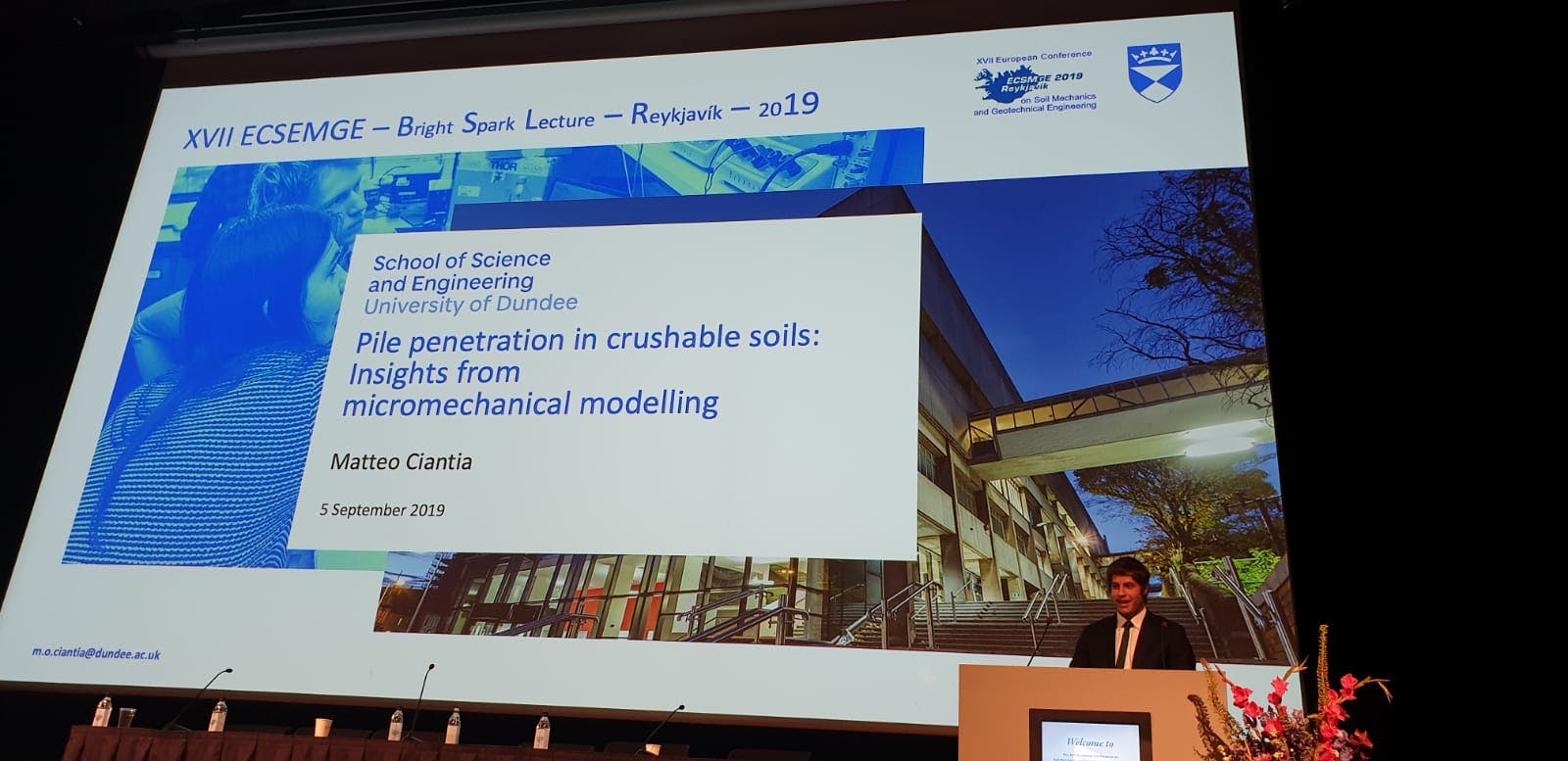One of the highlights of the XVII ECSMGE Conference held in Reykjavik in September 2019 was the Bright Spark Lecture given by Dr Matteo Ciantia of the University of Dundee. These lectures were introduced by the ISSMGE (of which the BGA is the UK National Chapter) to promote young members to play a major role in various international and regional conferences, by delivering a keynote and publishing an associated paper.
The BGA nominated Matteo to the Young Members Presidential Group (YMPG) of the ISSMGE for the Bright Spark Award, and Matteo was selected as one of the winners, along with Federico Pisanò of Delft University of Technology.

At the conference in Reykjavik Matteo received the award and presented his work. He gave his Bright Spark Lecture in front of hundreds of delegates, in the main hall of the Harpa Conference Center in the Icelandic capital, His lecture was entitled “Pile penetration in crushable soils: Insights from micromechanical modelling”. The goal of the presentation was to convince the audience that the discrete element method (DEM) is a numerical tool that can be successfully used to investigate complex geotechnical problems. He showed how the particle-scale mechanics that underlie the observed macroscopic responses affect distributions of particle stresses around the pile shaft. The paper (co-authored with Catherine O’Sullivan and Richard Jardine) associated with the Bright Spark Lecture is open access and is available here. The paper provides insights into one of the mechanisms proposed for the well-known, yet not fully understood, marked shaft capacity increases developed over time by piles driven in sands.
